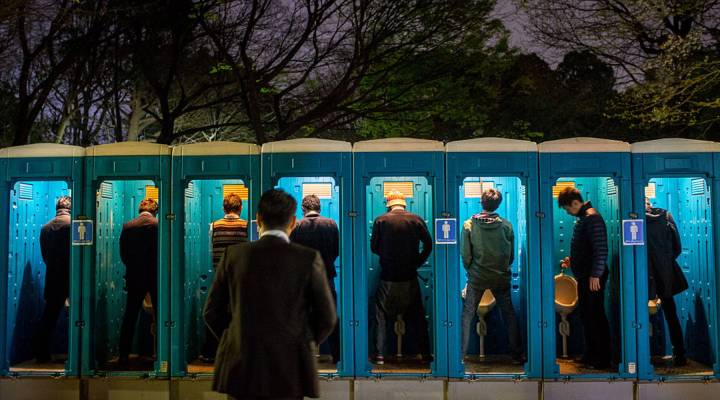
The bathroom of the future will be smarter
The bathroom of the future will be smarter

This election year, Marketplace is casting its eyes toward the future, asking how the country can address long-term opportunities and threats — the ones that don’t fit into a single federal budget or election cycle. We’ll imagine and ask you, if the next president were to appoint a Cabinet member to worry about future generations, what would be job one? Got an idea? Tell us here.
The recent flap over bathrooms in North Carolina suggests that person might have to consider a controversial and potentially awkward topic: the public restroom.
It might sound trite for a cabinet-level official to be contemplating the loo, but of course it’s only been a little over 50 years since bathrooms were racially desegregated under federal law, and 25 years since buildings have been required to install toilets that are accessible to people in wheelchairs.
We flushed out some answers about what a bathroom of the future might look like.

There are lots of problems with the current bathroom paradigm: the smells, the broken door locks, the gender and body shame, the revealing stall doors. And there’s the nagging inequality: Transgender people report frequent harassment and stress in gender-segregated bathrooms, and women’s lines are often longer due to unequal requirements for stalls and urinals.
“When you’re thinking about the future, one of the things you get to do is dream a little bit,” said Laura Norén, a professor of sociology at NYU’s Center for Data Science who studies shared spaces like bathrooms. She co-edited a whole volume on the social dynamics of public restrooms, and she’s been thinking about the ideal future bathroom for years — she even has a detailed floor plan.
Norén’s bathroom of the future has accessible stalls, and room for families and caretakers including a changing table with its own sink. It’s gender-inclusive, but more private, with floor-to-ceiling stall doors. Pleasantly concealing water sounds emanate from the walls, and flushing is all with a foot pedal. There’s an option to wash up with a bidet-like flexible spigot rather than toilet paper.
John Engel with bathroom supply contractor Cintas said hygienic restroom design is already way ahead of reality.
“One of the big things is having an experience that’s hands-free,” he said. “Wouldn’t it be fantastic, you walk in, you don’t have to touch the door handle?”
| What should the bathroom of the future look like? We asked, you answered |
| North Carolina repeals ‘bathroom law’ |
| Mapping North Carolina’s trans-friendly bathrooms |
In the future, he predicts there will be smart bathrooms, with robotic cleaning functions. And there’s a lot of room for visual improvement, too: Cintas sponsors an America’s best restroom contest with winners that have ranged from glorified outhouses, to Gaudi-esque mosaic fairy tales with stalls like hobbit houses.
But most of that won’t be federally mandated: Bathroom laws are usually local laws, and typically the feds just get involved when they see a possible civil rights violation, which is exactly what’s happening now in North Carolina.
“I don’t think the Secretary of the Future would have a lot of time to work on this issue,” said Mara Keisling, executive director of the National Center for Transgender Equality. She thinks existing federal law will soon settle the debate over which bathrooms transgender people use.
And she predicts separate men’s and women’s rooms probably won’t go away, but she says single-stall restrooms are more likely to just be unisex.
“We have to have a public conversation about gender-neutral bathrooms,” Keisling said.
But Norén said in a lot of places globally, just having working bathrooms is actually the number one issue.
“If I’m thinking about the bathroom of the future, I’m just thinking about bathrooms, for more people, in the future,” she said.
And as water becomes more scarce, water-efficient toilets and manure made from human waste will probably dominate potty talk.
Correction: A previous version of this story said Professor Laura Norén was a professor at NYU’s Institute for Public Knowledge. She is now with the Center for Data Science at NYU. The story has been updated.
There’s a lot happening in the world. Through it all, Marketplace is here for you.
You rely on Marketplace to break down the world’s events and tell you how it affects you in a fact-based, approachable way. We rely on your financial support to keep making that possible.
Your donation today powers the independent journalism that you rely on. For just $5/month, you can help sustain Marketplace so we can keep reporting on the things that matter to you.












